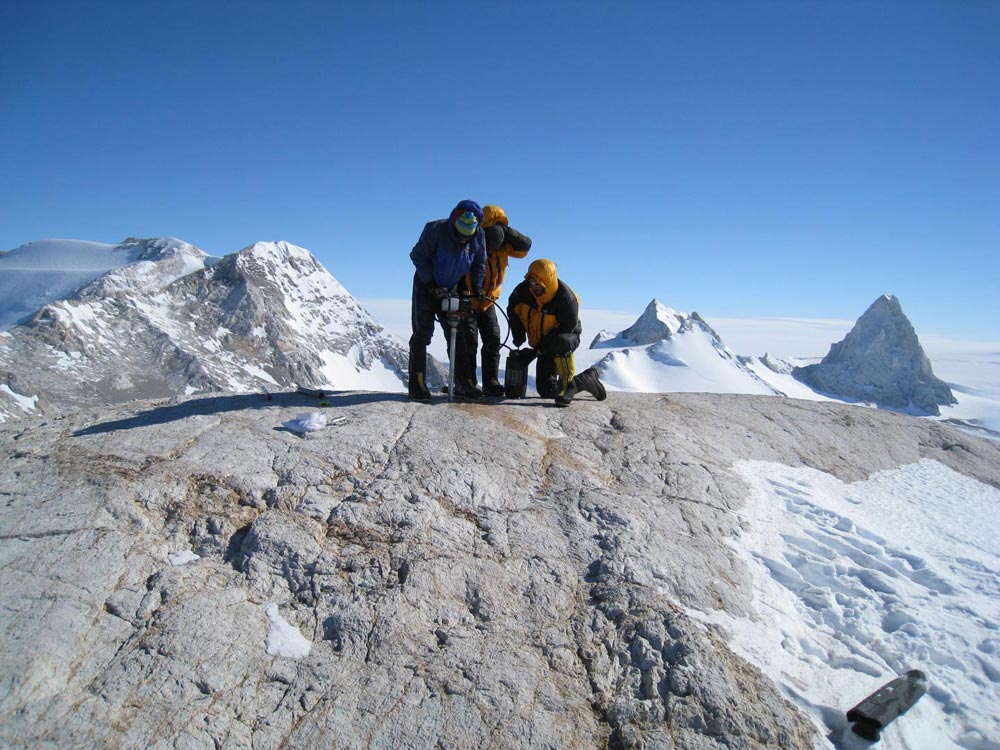

These are researchers drilling a bedrock core in West Antarctica.
Credit: David Sugden
The study of mountains in West Antarctica will help scientists improve their predictions of how the region might respond to continuing climate change. Its findings could also show how ice loss might contribute to sea level rise.
Although the discovery demonstrates the long-term stability of some parts of Antarctica's ice sheet, scientists remain concerned that ice at its coastline is vulnerable to rising temperatures.
Researchers from the Universities of Edinburgh and Northumbria studied rocks on slopes of the Ellsworth Mountains, whose peaks protrude through the ice sheet.
By mapping and analysing surface rocks — including measuring their exposure to cosmic rays – researchers calculated that the mountains have been shaped by an ice sheet over a million-year period, beginning in a climate some 20C warmer than at present.
The last time such climates existed in the mountains of Antarctica was 14 million years ago when vegetation grew in the mountains and beetles thrived. Antarctica's climate at the time would be similar to that of modern day Patagonia or Greenland.
This time marked the start of a period of cooling and the growth of a large ice sheet that extended offshore around the Antarctic continent. Glaciers have subsequently cut deep into the landscape, leaving a high-tide mark – known as a trimline — in the exposed peaks of the Ellsworth range.
The extended ice sheet cooled the oceans and atmosphere, helping form the world of today, researchers say. Their study is among the first to find evidence for this period in West Antarctica.
The research, published in Earth and Planetary Science Letters, was done in collaboration with the Scottish Universities Environmental Research Centre. It was funded by the UK Natural Environment Research Council and supported by British Antarctic Survey.
Professor David Sugden, of the University of Edinburgh's School of GeoSciences, said: “These findings help us understand how the Antarctic Ice Sheet has evolved, and to fine-tune our models and predict its future. The preservation of old rock surfaces is testimony to the stability of at least the central parts of the Antarctic Ice Sheet — but we are still very concerned over other parts of Antarctica amid climate change.”












